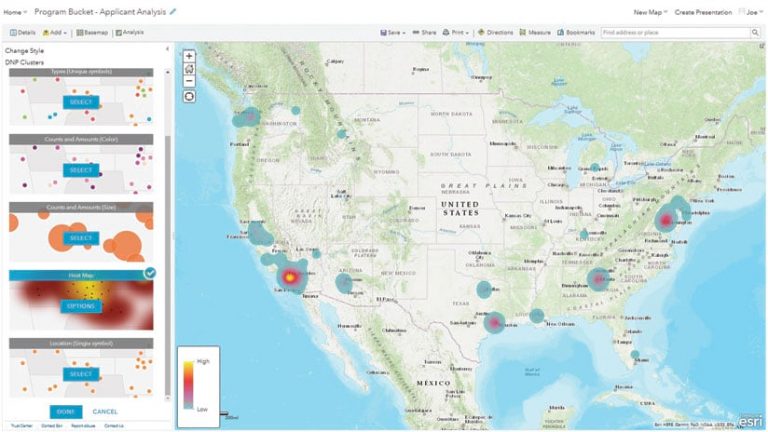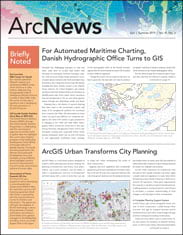Most organizations only use a small amount of their data’s analytic potential, according to a December 2018 report by research and advisory firm Gartner. But leveraging data—and being data driven—is essential to creating a sustainable advantage over the competition.
So what does it mean to be data driven? And how can an organization build a culture that’s galvanized by data, where employees use data and analytics to drive growth, profitability, and innovation?
A data-driven organization does two things really well. First, it understands that data is a valuable asset. Second, it empowers employees at every organizational level with the access, knowledge, and tools they need to use that data to turn business insights into actionable opportunities.
Many companies attempt to develop a data-driven culture by employing a highly skilled and creative data science team that works with volumes of data and puts together related reports that, all too often, fail to get acted on. Following a data strategy like this—that relies heavily on a data science team—usually ends in failure. While these experts are highly qualified to generate the data and reports that enable analysis, a stand-alone data science team does very little to build a company-wide culture of data-driven decision-making.
Why is that? According to the Gartner report, entitled Predicts 2019: Analytics and BI Strategy, it’s because the data science team doesn’t tell stories that are persuasive or even visible to decision-makers. Often, decision-makers lack the knowledge and tools they need to analyze the data. In turn, the data science team lacks the skills required to clearly communicate how an analytic report could translate into business process improvements that increase revenue, reduce costs, or otherwise drive innovation.
Moreover, the demand for data scientists is outpacing the number of college graduates who study data science or data analytics, according to a recent Gallup poll. And there is a large gap between the number of data analysts who have the functional knowledge (e.g., in marketing or operations management) needed to translate data into real business insights that are actionable, found a report by job market analytics company Burning Glass Technologies.
What can leaders do about all this? Well, they should certainly be asking themselves the following two questions:
- What tools should I buy for my employees to use to make data-driven decisions?
- How do I scale my workforce’s analytical abilities through higher education and training?
Fortunately, as the Gartner report explains, the availability of easy-to-use analytics software is on the rise. Now, with programs such as Insights for ArcGIS, performing data analysis simply takes a few clicks of the mouse or taps on a screen rather than full-fledged computer programming skills. This is giving rise to a new role that Gartner calls the “citizen data scientist”—someone within an organization who can execute analyses that, just a few years ago, would have required a highly experienced data scientist.
Additionally, it is now easier than ever for organizations to grow their employees’ data analytics skills—thus enabling more of them to become data citizen scientists. Increasingly, organizations are encouraging (and often paying for) staff to take online classes and participate in certificate programs that teach them how to access data and use analytic tools to solve complex business issues and social problems.
Brandman University, where I am provost, has been recognized by its accreditor as a data-driven organization, particularly in academic affairs. We have the tools—and several of us at various levels have developed the skills we need—to conduct market-focused spatial analysis. To do this, my colleagues and I start with the big picture, presented in a story map, that allows us to then take a deep dive into the data itself to solve problems or identify opportunities.

For instance, when we were developing our product marketing strategy for Brandman’s online graduate nursing program for fall 2019, we learned anecdotally that this program was growing on the East Coast due to referrals from current students and recent graduates who were living there. But two things were unclear: whether these referrals were concentrated in particular locations on the East Coast and, if so, whether any clusters of referrals were large enough to warrant targeted marketing campaigns.
Using Insights, Brandman’s associate vice chancellor of marketing operations—who is not a data scientist—mapped our online nursing program application data. He was able to identify significant clusters of applicants in and around Washington, DC; Atlanta, Georgia; and Houston, Texas (in addition to Southern California, which makes sense because our home campus is in Orange County, California). This location intelligence told us that we needed to focus some significant marketing efforts in these locations. As a result, for fall 2019, we are taking two new marketing approaches. First, we are testing a limited-time referral scholarship to see if that can augment referrals in these areas. Second, we are targeting major health-care employers in these markets for our partnership program, which provides incentives to them to create a cohort of employees (nurses) to start and complete Brandman’s online nursing program as a group.
Clearly, GIS is a powerful tool to use for data-driven storytelling. For Brandman, having a heat map that showed where our online nursing program applicants were located was a persuasive and visible indicator that we needed to develop a targeted marketing and referral campaign to harness these opportunities. For other organizations, GIS can help manage assets in real time, execute enterprise resource planning (ERP), and understand complex relationships.
Additionally, with the rise of 5G technology alongside the Internet of Things (IoT), Brandman’s business advisory council believes that the convergence of location intelligence and data science will progress even more. In my opinion, GIS will be the driving force in the 5G revolution, with the two technologies transforming the way we conduct business, operate government bodies, and live our personal lives.
Digital transformation like this is a great opportunity, as James McCormick, a principal analyst at market research firm Forrester, pointed out on the Esri & The Science of Where podcast.
“Location—and context in particular—is really powerful for the way we understand our businesses and our customers, and that’s really fueling interest in spatial and location technologies,” he said.
Very few companies are actually leveraging data and analytics to gain a competitive advantage, though, McCormick added. By 2021, however, Forrester projects that having an insights-driven business strategy will be the norm.
“We need to embrace insights at scale,” McCormick said, “so we need to have data and analytics technologies that deliver strategic value.”
That is what GIS can offer. By combining asset information or ERP data with GIS, organizations can uncover insights and opportunities that simply weren’t visible before. And with the global geographic information available from Esri via ArcGIS Online and ArcGIS Living Atlas of the World, the opportunities to enhance data are remarkable.
But when it comes to filling growing skills gaps—between analyzing data and using it to drive growth, profitability, and innovation, for example—organizations need to stop focusing on hiring this expertise and start training their current workforce, as additional research from Gartner shows.
So how can your company scale staff skills and develop a data-driven culture? By not cordoning off data so it’s the sole responsibility of a data science team and instead empowering more people—from managers to marketing professionals—to use GIS and other data analytic tools to make impactful decisions.


